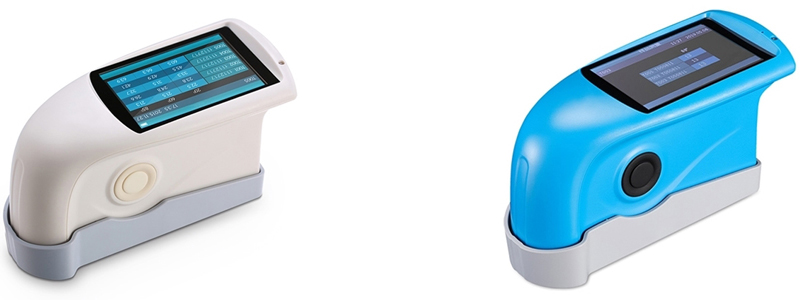How to Choose a Gloss Meter?
Gloss meter, as known as gloss tester, is used in gloss measurement for paint, marble, ceramic, plastic, metal, etc. Gloss meter is widely used in chemical raw materials, paint manufacturing, aerospace industry, automobile industry, car maintenance, floor polishing, electronics, electrical appliances, IT communications and other industries. But how to choose a gloss meter?

Linearity of the measured data of the gloss meter
From the principle of the gloss meter, we can infer that the linearity of the it's measurement data is an important factor related to the quality of the gloss meter. If the gloss standard plate is accurate, for example, the gloss of the standard plate is 95.5, then the measurement data of materials with a glossiness near 95.5 is generally accurate, but the measurement data is accurate for materials with a gloss far away from the standard plate. It is necessary to ensure that the linearity of the instrument measurement system is excellent. The linearity of the gloss meter to measure the acquisition system is a difficult point in the design of gloss meters.
Constant current source and temperature compensation
The stability of the light source of the gloss meter and whether it has a temperature compensation function is also an important factor for the stability of it. We know that the luminous efficiency of the light source is different under the condition of different temperature and different supply current. Therefore, the light source of the general gloss meter needs to use a constant current source and a temperature compensation circuit to ensure the stability of the light source. General gloss meters with constant current source can do it, but there are differences in the accuracy of the constant current source. But the temperature compensation function, only a few gloss meters have this function.
The standard plate of the gloss meter must be well protected
The measurement of the gloss meter must take the data of the gloss standard plate as the reference standard. If the standard plate is inaccurate, the instrument must be inaccurate. Moreover, the gloss of the standard plate is very easy to be stained, so the standard plate of the instrument must be well protected. Generally, a special base is used, and the standard plate is embedded in the base to avoid external pollution and scratches.
The gloss meter must have the self-diagnosis function of standard plate contamination
That is, if the standard plate is dirty, the instrument can recognize it and prompt the user to clean the standard plate. Otherwise, the calibration is wrong, and all measurement data will be inaccurate.
Gloss meters need temperature compensation
The principle of the gloss meter is to use a light source and a receiver to measure the reflected light flux on the surface of the material. If the ambient temperature changes after the instrument is calibrated, resulting in a change in the luminous efficiency of the light source, the error in the change in the luminous efficiency of the light source will be directly reflected in the measurement data. If there is a temperature compensation function, the luminous efficiency changes caused by temperature changes can be compensated to ensure that the luminous efficiency of the light source remains unchanged.

